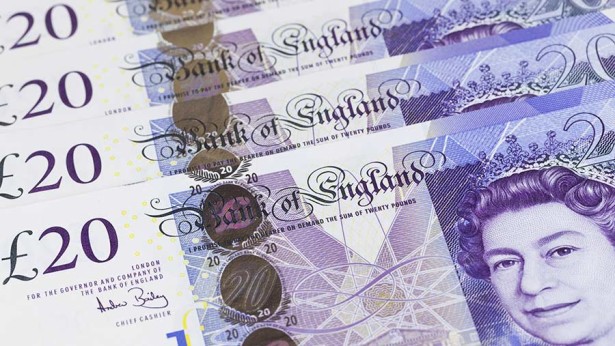The British Pound has continued to fall down the charts during trading on Wednesday as a result of the markets becoming concerned regarding the upcoming EU referendum and the significant risks that the UK economy would face if the United Kingdom did vote to leave the European Union in just over three weeks.
I think that investors were generally beginning to underprice the possibility of a UK exit as if it was a forgone conclusion that the United Kingdom would automatically vote to remain in the European Union later this month and as a result of the threat being underpriced, the British Pound is suffering steep losses and remains to appear under heavy selling pressure.
All of the risks for the British Pound are still pointing strongly to further weakness and there is limited upside strength potential for the currency even if the UK did vote to remain in the EU later this month. What investors need to remember is that UK economic momentum is weakening and data has disappointed the markets throughout 2016, meaning buyers are not going to be heavily encouraged to price in longer-term strength for the currency regardless of the outcome later in June. With Dollar demand currently looking very stable due to the renewed US interest rate optimism, it has become extremely difficult to construct an argument for the GBPUSD to trade any higher than 1.50 and this might be the limit for the Pound/Dollar throughout the second half of 2016. This ultimately means that the trading strategy from investors will be to continue selling rallies in the GBPUSD.
Over the shorter term and if the markets continue to be alerted regarding the possibility that the upcoming referendum is not a foregone conclusion for a “remain” outcome, this means that the GBP will continue to remain under pressure against currencies such as the Euro and Japanese Yen. The positive news for the GBP is that with the Dollar being revived due to renewed US interest rate optimism is that the majority of global currencies are going to be under pressure due to a strengthening USD, meaning that it is not just one-way traffic for further Pound losses against all currencies over the medium and longer-term.
Advertisement
WTI Oil slips lower as OPEC outcome awaits
After making yet another attempt to reach the ceiling at $50 during trading on Tuesday, WTI Oil has hit the wall and declined by nearly $2 to trade slightly above $48.21 on Wednesday. $50 is still seen as the psychological “top” for the commodity and we would need to close above this level as trading concludes for the week for WTI Oil to be able to trade above $50. The general expectations are that there will be no changes to the outcome from the OPEC meeting in Vienna tomorrow, meaning that the oil markets could remain under pressure as a result.
The area between $47.20 – $47.40 is currently seen as the next area of support for WTI Oil but even if we fall below this level, the commodity would need to conclude weekly trading below the $44-$42 for worries to emerge that we could truly see the returns of heavy selling for the oil markets. Aside from the OPEC meeting causing some short-term anxieties to investors, it is worth pointing out that both OPEC and the IEA released reports in May indicating that global inventories will suffer from a dramatic decline in reduction over the second half of 2016 and this would be very positive when it comes to the medium and longer-term outlook for the price of oil.
Advertisement
Japanese Yen strengthens despite sales tax delay
The Japanese Yen has appreciated against many of its currency partners today, despite Japanese Prime Minister Shinzo Abe announcing a delay to a sales tax increase from 8% to 10% until at least late 2019. This news should have really weakened the Japanese Yen because it would have been seen as another update to fiscal reforms that should have enticed further spending from consumers, which in turn would have increased inflation prospects that have long plagued the Japanese economy. The best explanation to provide for the Japanese strength during trading today would likely be strictly correlated to the risk aversion we are seeing in the markets with equities coming under pressure and the USDJPY once again finding tough resistance at 111.
It is worth pointing out to technical traders that the last time the USDJPY met profit-taking at 111 that the currency pair suddenly fell off a cliff towards 106, and we have already nearly dropped from 111 to marginally above 109 over the past two trading sessions.
For more information, please visit: ForexTime
Advertisement
Add a comment







